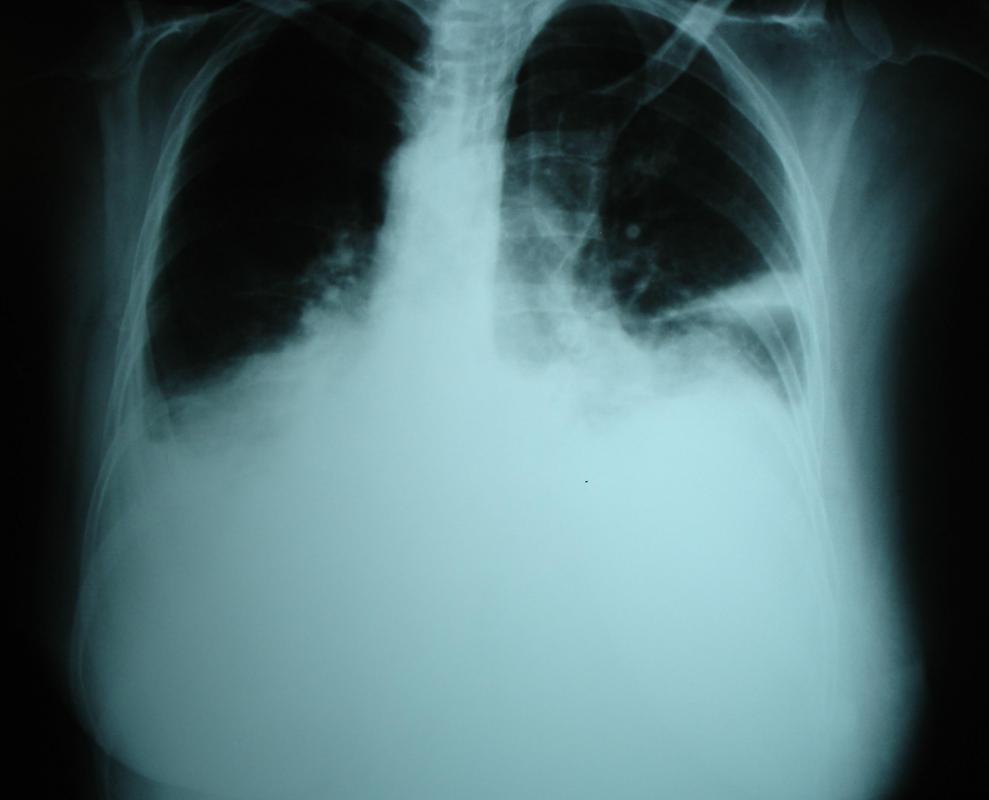At WiseGEEK, we're committed to delivering accurate, trustworthy information. Our expert-authored content is rigorously fact-checked and sourced from credible authorities. Discover how we uphold the highest standards in providing you with reliable knowledge.
What Is the Mediastinal Pleura?
Every structure and organ inside the body is surrounded by a thin membrane designed to protect and hold the internal components in position. In the chest, the mediastinum is the central area that houses the heart and all the essential chest organs with the exception of the lungs. The mediastinal pleura is the wrapper-like encasement that lines the area in the chest between the right and left lungs. This fluid secreting covering is designed to decrease the friction caused when the lungs slide against the walls of the chest cavity as they expand and deflate during breathing.
Developing from the parietal pleura, or the sheath that covers the entire chest area, much like plastic wrap lubricated with a non-stick spray, the mediastinal pleura wraps the internal structures situated between each lung. The pulmonary pleura also arising from the parietal pleura, then encases each lung. The parietal pleura also alters slightly to wrap the ribs, a section of the thin protective membrane referred to as the costal pleura. As it forms a sheath around the diaphragm, the primary breathing muscle located just below the rib cage, it is referred to as the diaphragmatic pleura.

Anytime a portion of the pleura, including the mediastinal pleura, becomes irritated or inflamed, it causes a condition called pleurisy. Also known as pleuritis, pleurisy can disturb the functioning of the protective membrane and cause a pain in the chest with breathing by an increase in friction as the internal structures adjust and slide during breathing. This pain may be exacerbated with sneezing, coughing, or attempts to draw in a deep breath.

Depending on the severity and scope of the inflammation of the mediastinal pleura, this pain may also extend into the shoulder area. When pleurisy causes a buildup of fluids around the lungs, a condition called pleural effusion, the inflammation can also cause shortness of breath. This is due to an increased pressure pushing on the lungs hampering the lung’s ability to expand to its full potential. If this fluid buildup becomes infected, the body may attempt to combat the infection by developing a fever and dry cough.

Treatment of the inflamed mediastinal pleura is dependent on the cause. In severe cases, the excess fluid buildup may need to be drained so the lungs and the internal structures of the chest cavity can resume normal functioning. When an infection is present, antibiotics may be necessary to rid the body of the infectious process causing the inflammation.
AS FEATURED ON:
AS FEATURED ON:
















Discuss this Article
Post your comments